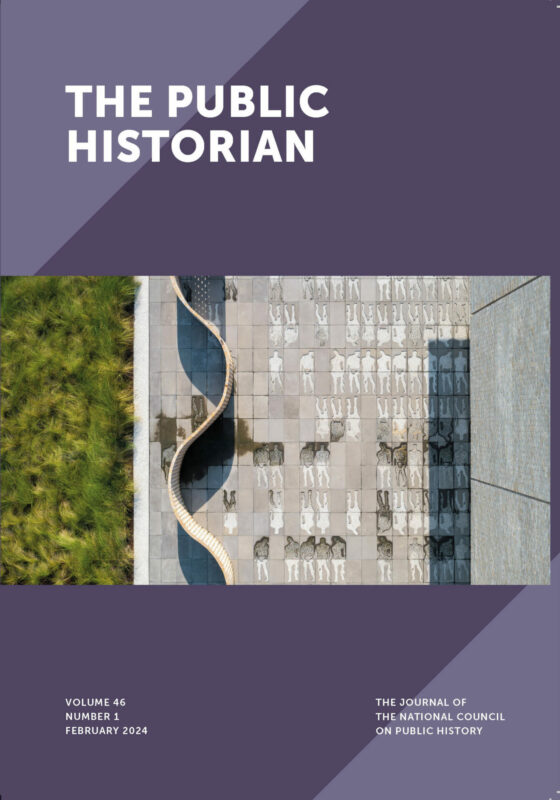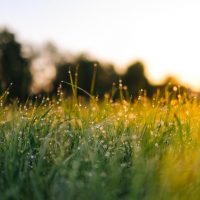The National Park Service (NPS) has no official mandate to interpret the lives of people with disabilities across the park system. To address this lack, the NPS Park History Program is creating the Disability History Handbook, a multi-authored anthology...
The National Park Service (NPS) has no official mandate to interpret the lives of people with disabilities across the park system. To address this lack, the NPS Park History Program is creating the Disability History Handbook, a multi-authored anthology slated for publication in late 2024. It will be available in several forms including a physical book, an accessble PDF that can be read with a screen reader, and a version which will be free to the public on the NPS website. I am honored to assist as a Disability History Fellow on this project.
Since embarking on my public history path in 2017, I have delighted in learning from, and contributing to, the interpretation of U.S. disability history. The intersections of public and disability history underscore the importance of accessibility, inclusion, and representation of people with disabilities in the places we work, visit, commemorate, and live.
As a graduate student and fellow with the National Park Service, I’ve considered essays by Catherine Kudlick, Katherine Ott, and Alima Bucciantini to be the foundations of my disability and public history curriculum. Each scholar has shed light on the necessity for museum accessibility in reaching new and underserved audiences. They’ve also enriched our understanding of museum collections through interpreting the disability histories embedded in archives and the built environment.
I’ve witnessed meaningful NCPH conference sessions on the challenges and opportunities of implementing disability justice in museums and historic sites. These include the 2016 working group “Making Public History Accessible: Exploring Best Practices for Disability Access,” the session “Barriers to History: Making History and Research Accessible” (2020), and the 2022 session, “A Public Historian’s Toolkit for Disability Justice,” on which I was a presenter. Each session has encouraged historians to move beyond museum accessibility alone to also amplify the experiences of people with disabilities in the past: their resistance, innovation, and community-building practices, as well as the barriers and oppression they have faced.
Within the National Park Service, it is largely through the efforts of committed rangers, interpretive and educational staff, and other museum practitioners that specific national park units have become more inclusive of people with disabilities—in the past, as well as in the present. For this reason, the NPS Disability History Handbook intends to spark collaboration, research, and further study across the national park system. Stewarded by Dr. Turkiya Lowe, Principal Historian of the National Park Service, and Dr. Lu Ann Jones, of the NPS Park History Program, the Handbook was originally imagined as a tool for interpretive and educational staff working in the NPS. Yet it has the potential, as an open-access map of possibilities in place-based disability history, to reach a much broader readership.
In 2022, the NPS Park History Program welcomed Dr. Kathleen Brian as the Handbook’s lead editor and NCPH as a production partner. Over the past eighteen months, we have received contributions from twenty-seven authors and dozens of reviewers from diverse backgrounds. By holding space for many voices, Dr. Brian is creating a handbook that will accentuate the multiplicity of ways that disability history can enrich, expand, and revise how we remember and narrate the past.
Each chapter functions as a point of entry into the ways that disability history might inform public history. While some are tethered to historic sites managed by the NPS or listed on the National Register of Historic Places, others connect to places made significant by the communities who memorialize them. In other words, not all sites described in the Handbook are managed by or received designation from the National Park Service. Instead, they may highlight places where people with disabilities have gathered, protested, supported one another, and broken barriers in literal and figurative ways. The Handbook also includes suggestions for further research to encourage readers to seek deeper understandings of complex topics and themes. The goal is to support those working in public history spaces so that they may integrate the stories of people with disabilities into interpretive and educational programs, including exhibits and wayside signs.
As we await the Handbook’s publication, we have hosted webinars for NPS staff to encourage ways they may integrate disability history in exhibits and other programmatic material. Through these internal webinars, we’ve also spotlighted disability history-focused projects underway at park units across the country.
The webinar “‘Disability Things’ and National Park Collections” riffed on Dr. Katherine Ott’s term “disability things” to discuss the material objects and items that people with disabilities have purchased, self-fashioned, and innovated to live in a world that is often designed without them in mind. Dr. Nicole Belolan, a consulting public historian and Handbook author, presented her collection of historic crutches to reflect on the ways that ordinary people crafted tools that facilitated movement in their surroundings. Frank Futral, curator at the Home of Franklin D. Roosevelt National Historic Site in New York, showcased the ways that museum staff have enriched their interpretation of the former president and disability. The NPS articles “FDR, Wheelchairs, and Diplomacy” and “A Fresh Look on FDR’s Wheelchairs on International Wheelchair Day” provide insight into how family and politicians perceived Roosevelt’s wheelchair use. In addition to describing the design of the wheelchairs, both presenters demonstrated how to write with compassion and consideration of Roosevelt’s privileges of wealth, power, gender, and whiteness.

Postcard, “The World’s Sanitarium in 1875,” Hot Springs, Arkansas, 1916. Credit: Hot Springs National Park Archives
The webinar “Thermal Waters of the NPS” shed light on an underexplored topic in U.S. disability history: the use of hot springs as sites of “cure,” healing, and restoration. Dr. Cynthia Wu of Indiana University, who also writes for the Handbook, shared reflections on her personal experiences at Big Bend National Park in Texas. The hot springs at Big Bend have long attracted Native peoples, as well as Spanish-descended and Anglo/white settlers at what is now the Mexico-U.S. border. Wu also presented on white entrepreneur J.O Langford and his bathhouses there, inviting attendees to consider the intersections of settler colonialism, disability, and tourism. Dr. Wu was joined by Dr. Daniel Chmill, park ranger at Hot Springs National Park in Arkansas. Recipient of the National Park Foundation’s grant to enhance inclusive storytelling, the staff of Hot Springs have embarked on an oral history project to document the bathhouse workers there. The project “We Bathe the World” explores the entanglements of race, anti-black racism, and access to the national park’s mineral springs.
Thinking with disability history across place requires creativity and time to build trust among the communities that museums and historic sites intend to serve. As an open-access, multimedia project, we hope that this Handbook will reach broader audiences, including students, disability communities, and disabled people and their allies. We look forward to learning about more disability history projects in public history spaces, such as those at Hot Springs National Park and the Home of Franklin D. Roosevelt National Historic Site.
Whether you are working with the National Park Service or other history-oriented organizations, we’d love to learn if you’re involved with similar initiatives on U.S. disability history. Please contact perri_meldon [at] partner.nps.gov if you’d like to share your organization’s story.
~Perri Meldon holds a 2022-2023 American Conservation Experience fellowship with the National Park Service. She is also a PhD candidate at Boston University, where she studies environmental and public history.
The post The NPS Disability History Handbook: Collaboration, process, and community appeared first on National Council on Public History.












